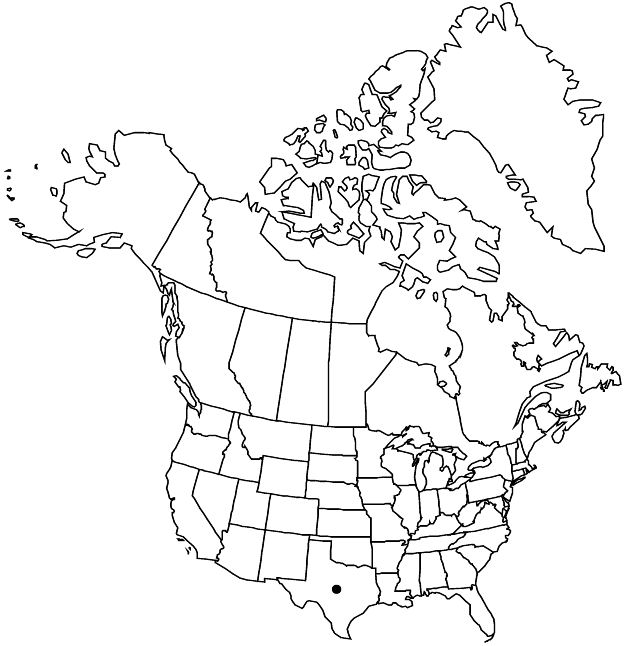Abutilon trisulcatum
Repert. Spec. Nov. Regni Veg. 16: 32. 1919.
Herbs, annual, sometimes perennial, or subshrubs, 1–2.5 m. Stems erect, prominently 3-sulcate when young, minutely puberulent, usually viscid (especially in inflorescence). Leaves: stipules subulate, 2–4 mm; petiole usually shorter than blade; blade slightly discolorous, ovate, 6–11 cm, longer than wide, base cordate, margins crenulate-serrulate, apex acuminate, surfaces tomentulose, obscured by pubescence. Inflorescences terminal, open panicles. Flowers: calyx 3–4 mm, lobes not overlapping, erect in fruit, lanceolate-ovate; corolla sometimes reflexed, yellow, often with dark red center, petals 4–6 mm; staminal column glabrous; style 5-branched. Schizocarps subcylindric, usually medially constricted, 6–8 × 5–8 mm; mericarps: apex apiculate, minutely puberulent. Seeds 3 per mericarp, 2 mm, minutely pubescent. 2n = 14.
Phenology: Flowering winter–spring.
Habitat: Dry shrublands, disturbed vegetation, roadsides
Elevation: 0–300 m
Distribution

Tex., Mexico, West Indies, Central America
Discussion
Abutilon trisulcatum occurs from Texas to Nicaragua and in the West Indies. It is a common roadside weed in most of Mexico, and has been found in southern Texas in Cameron and Hidalgo counties.
Selected References
None.